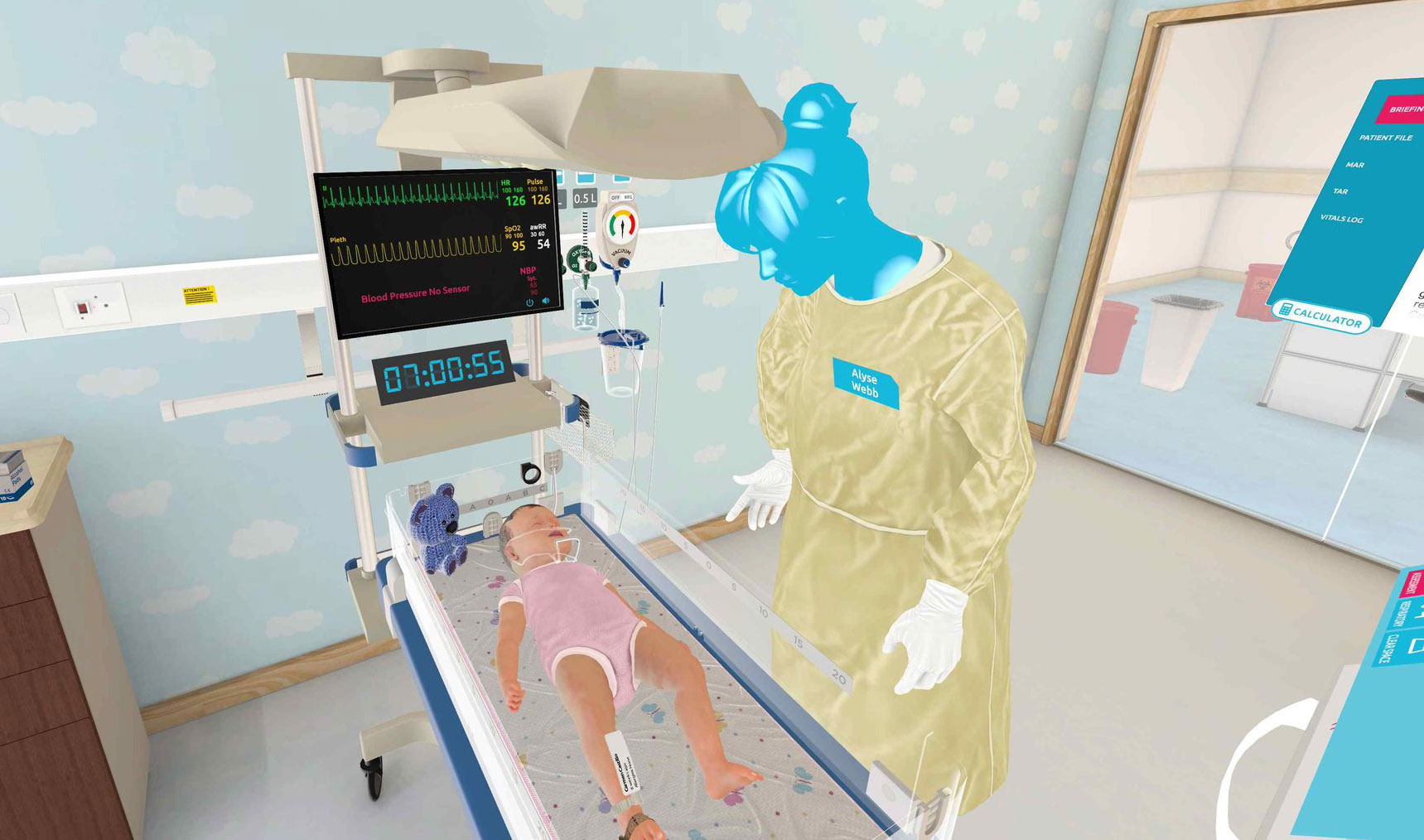5 Simulations to Teach Pediatric Airway Assessment to Nursing Students

Table of Contents
Name of the heading
1- Start your table with the syntax {start-table}
2 - Add an H3 Heading to create a new column (this will be the column title)
3 - List cells as bullet points in a List element
4 - End your table with the syntax {end-table}
Pediatric airway assessment is a vital skill for all nurses working with children. Given the anatomical and physiological differences in pediatric patients, early recognition of airway compromise can be life-saving. Teaching this skill effectively requires more than textbook knowledge—it demands hands-on, experiential learning. Pediatric nursing simulation offers a dynamic and safe environment for students to learn, practice, and refine their clinical judgment and nursing skills.
From simple task trainers to immersive technologies, here are five types of simulation that can elevate your pediatric airway assessment education and prepare nursing students to handle airway emergencies confidently.
1. Low-Fidelity Task Trainers
Low-fidelity task trainers are basic anatomical models that allow nursing students to practice specific skills like airway positioning, suctioning, or the insertion of nasopharyngeal airways. Though these models lack realism in terms of patient interaction, they are excellent tools for mastering the mechanical aspects of pediatric airway management.
For example, using a pediatric head-and-torso model, students can practice the correct head tilt-chin lift technique, how to recognize airway obstruction signs, and how to create and maintain a patent airway. Low-fidelity task trainers are affordable, easy to set up, and perfect for honing nursing skills and building muscle memory before moving on to more complex scenarios.
2. Standardized Patients
Standardized patients (SPs) are trained actors who portray patients and they add the critical human element to pediatric airway assessment. While actors can’t always replicate a child’s physiology, they can simulate the patient and caregiver perspectives in pediatric care scenarios. In a pediatric simulation scenario, nursing students must not only assess the patient but also communicate effectively with anxious caregivers.
For example, a scenario might involve a distressed parent describing a toddler’s labored breathing or noisy respirations. Students can then perform a focused respiratory assessment, interpret subjective data, and explain their actions to the caregiver.
This type of pediatric nursing simulation emphasizes communication, empathy, and clinical reasoning, which are all crucial for pediatric care.
3. High-Fidelity Manikins
High-fidelity manikins are advanced, computer-driven models that can simulate pediatric respiratory conditions, including abnormal breath sounds, oxygen desaturation, and cyanosis. These realistic manikins can "breathe," blink, and respond to interventions, offering an immersive experience for nursing students.
Instructors can program the manikin to mimic pediatric airway emergencies such as croup, anaphylaxis, or foreign body aspiration. Real-time feedback allows students to assess airway patency, administer oxygen, and escalate care appropriately. By replicating emergent respiratory symptoms commonly seen in pediatric patients, manikin-based pediatric respiratory simulation scenarios can help bridge the gap between theory and practice.
4. Immersive Virtual Reality (VR)
One of the most exciting innovations in nursing education is immersive virtual reality (VR). Combining realism with repeatability, VR headsets enable students to enter a fully interactive, 360-degree pediatric care environment without leaving the classroom—and to practice high-stakes scenarios without risk.
UbiSim’s immersive VR platform is specifically designed for nurses, by nurses, to provide a comprehensive learning experience. In the bronchiolitis simulation, students assess a virtual infant struggling to breathe, visually observing signs of respiratory distress—nasal flaring, grunting, intercostal retractions—and interacting with virtual monitors and equipment. The immersive nature of VR enhances spatial awareness and decision-making, which are critical when managing pediatric respiratory conditions.
Another UbiSim option is a pediatric sepsis training simulation, which integrates pediatric airway evaluation with broader nursing assessment, like perfusion and level of consciousness. This scenario also allows students to practice prioritization and therapeutic communication with both the pediatric patient and their caregiver.
5. Role-Playing Games
Role-playing games (RPGs) bring creativity and collaboration into the learning space. In this format, nursing students assume various roles—nurse, parent, physician, or even the child—to simulate pediatric airway scenarios. While less technologically advanced than VR or high-fidelity manikins, RPGs are highly effective in building clinical reasoning, teamwork, and adaptability.
A pediatric airway role-playing scenario might involve a school nurse responding to a child with an asthma attack. The students must assess the airway, manage medications, and communicate with EMS—all while role-playing under time pressure. RPGs are flexible and can be easily customized to fit course objectives, including cultural competency, interprofessional communication, and more.
Final Thoughts
Effective pediatric airway assessment requires more than theoretical knowledge—it demands immersive, practical experience that prepares nursing students for real-world clinical challenges. By incorporating different types of simulations, educators can design a robust curriculum that builds both competence and confidence.
As nursing education continues to evolve, integrating these simulation modalities into the pediatric nursing curriculum is not just beneficial—it is essential. By doing so, nursing programs can ensure that their graduates are not only skilled in airway assessment but also fully prepared to deliver competent care to their youngest and most vulnerable patients.
FAQs
Heading 1
Heading 2
Heading 3
Heading 4
Heading 5
Heading 6
Lorem ipsum dolor sit amet, consectetur adipiscing elit, sed do eiusmod tempor incididunt ut labore et dolore magna aliqua. Ut enim ad minim veniam, quis nostrud exercitation ullamco laboris nisi ut aliquip ex ea commodo consequat. Duis aute irure dolor in reprehenderit in voluptate velit esse cillum dolore eu fugiat nulla pariatur.
Block quote
Ordered list
- Item 1
- Item 2
- Item 3
Unordered list
- Item A
- Item B
- Item C
Bold text
Emphasis
Superscript
Subscript
Explore more

From 30 Minutes to 3: How AI Enhanced Analytics Transforms Debriefing Preparation
AI Enhanced Analytics: Scenario Performance Data now available in UbiSim's Version 1.19
.jpg)
Behind the Scenes: How We Brought Incisions & Dressings to Life in VR
How the UbiSim team built a VR system displaying 300+ distinct incision states—balancing clinical accuracy, technical constraints, and nursing education needs.
.jpg)
Step Inside the Room of Errors: Playful Exploration, Serious Skills
Learn how UbiSim's Room of Errors transforms nurse training through investigative play. Students spot hidden safety risks and build situational awareness.




